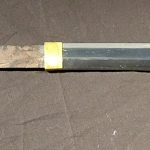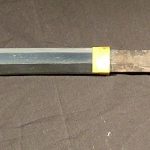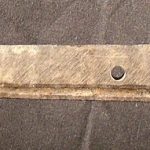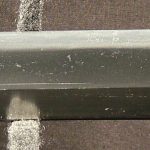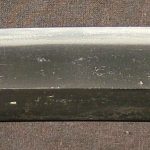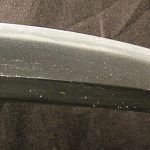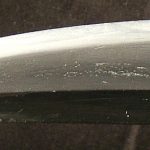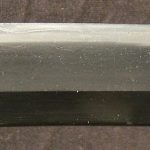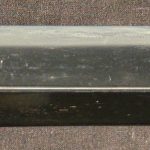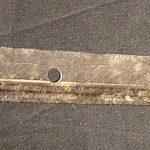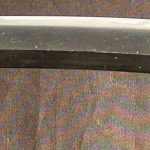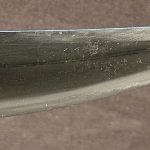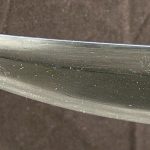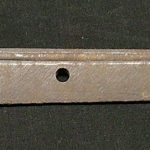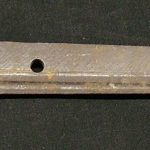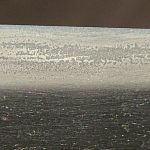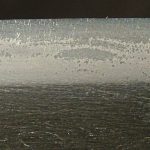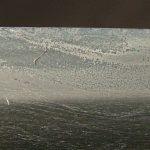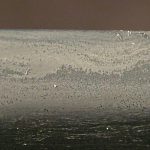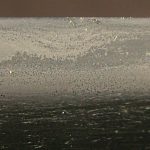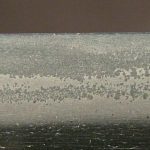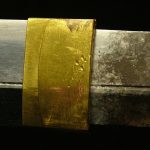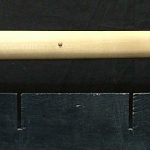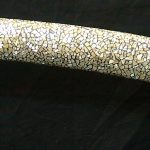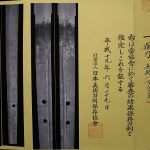NAGINATA / KO-UDA / NBTHK
NAGINATA, KO-UDA
NBTHK
KOTO PERIOD
SUGATA: NAGINATA ZUKURI
MEI: MUMEI
DATE: NONE (KOTO)
NAGASA: 49.37cm (19.4375″)
OVERALL: 91.44cm (36″)
MIHABA: 0.794cm (0.3125″)
KASANE: 0.63cm (0.1875″)
SORI: 0.875”
NAKAGO: SURIAGE
MEKUGI ANA: THREE
YASURIME: SUJIKAI
MUNE: IORI
HADA: ITAME
HAMON: SUGUBA
BOSHI: KOMARU
HORIMONO OMOTE: NAGINATA HI
HORIMONO URA: NAGINATA HI
HABAKI: 2 PC. GOLD FOIL
SHIRASAYA
Koto period Naginata attributed to the Ko-Uda school by the NBTHK. Nagasa is nearly 19.5”. It is suriage, but retains a long nakago of 16”, making the overall length 36”. The blades has several kizu, but nothing fatal and nothing which prevented it receiving Hozon papers. The polish is still pretty good (see photos) and there is a lot of activity to been seen and studied. The shirasaya is piecemealed and consists of a standard wooden lower with the saya is from an old koshirae covered in abalone. The saya is split and should be repaired or replaced.
This naginata is attributed to Ko-Uda. This attribution means this naginata was made prior to the Edo period, but not attributed to a specific smith.
Some general history. The UDA School was founded by Kunimitsu c. 1317-1319 after moving from the Uda area of Yamato province to Etchu. Kunifusa, first son of Kunimitsu was said to have studied under Norishige.
The Etchu no Kuni is divided into three basic work styles by Jidai. 1.) Kamakura Jidai: Norishige and Yoshiro. 2.) Nambokucho Jidai: Tametsugu, Sanekage 3.) Muromachi Jidai: Uda Kunifusa, Kunimune, Kunihisa, Kunitsugu, etc.
After the Nambokucho jidai only the Uda smiths remained in this location.
Sending this blade to Japan for NBTHK shinsa today from the US or Europe would be expensive and risky. Considering all fees: postage/insurance to and from Japan (and maybe even to a broker outside Japan first), torokusho fee, broker fees, NBTHK fees, any necessary wire or PP fees, etc., you would be at 1K or more.
SOLD
